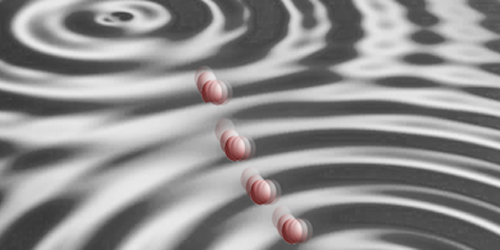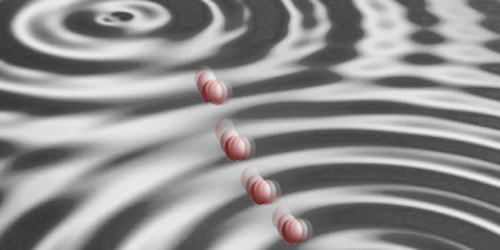Creating Electron Lattices with Sound Waves
Electrons may be hard to hold in place, but a new method could allow researchers to manipulate electron positions in a solid using acoustic waves. These waves could generate a periodic electric potential that could trap a lattice of electrons in much the same way that a periodic optical field can trap a lattice of atoms. The technique could be applied to both electrons and quasiparticles like excitons (electron-hole pairs), opening up a new route to studying the interactions of these particles with each other and with their environment.
The method outlined by Martin Schuetz at Harvard University and colleagues utilizes sound waves that ripple along the surface of elastic materials. If the material is also piezoelectric, these so-called surface acoustic waves (SAWs) induce an electric potential with the same spatial and temporal periodicity as the SAWs. The researchers propose sending two counterpropagating SAWs through such a material, which, under the right conditions, induce a stationary, periodic, electric potential. Interacting with a neighboring semiconducting material, the potential can trap the semiconductor’s electrons in the potential’s wells. The result would be a 2D array of trapped particles.
SAWs have been used before to manipulate electrons and excitons but only in moving potentials. As a result, the particles were only trapped for the few nanoseconds it took the waves to propagate across the sample. The method proposed by Schuetz solves this issue. It also enables easy reconfiguration of the trapping potential, allowing the positions of the trapped particles to be adjusted by changing the SAWs. Such a system could be used to controllably create patterns of electrons and quasiparticles for studying their many-body interactions.
This research is published in Physical Review X.
–Katherine Wright
Katherine Wright is a Contributing Editor for Physics.





